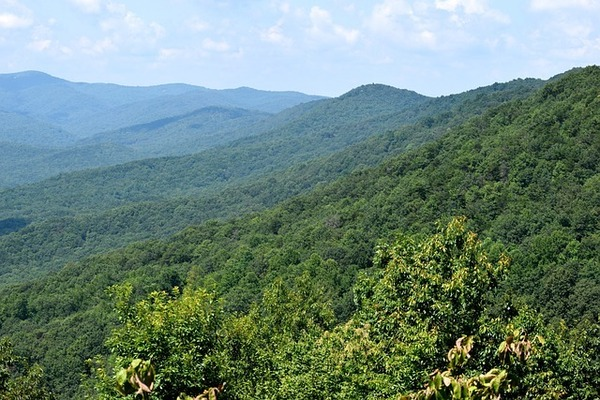A Beginner’s Quick Guide to the Appalachian Trail
Posted by Krista Eickmann on 23rd Feb 2024
The Appalachian Trail, a “footpath for the people,” covers over 2,000 miles of the Appalachian Mountains between Georgia and Maine. Its legendary challenge — hiking from end to end in one year — is daunting.
Women, transgender, and people of color face additional hurdles. While fellow hikers are usually friendly, the Appalachian Trail passes through populated areas where racism, sexism, and transphobia can be common.
We’ve gathered some tips to make your experience on the trail safe and rewarding.

Other Hikers are Your Strongest Allies
On the Appalachian Trail, a map is just one way to orient yourself. Thru-hikers are famous for helping each other, hiking in groups, coordinating trail chores, and watching out for each other.
Find other hikers you trust, and make friends with them. For women and minoritized hikers, these relationships can foster literal safety.
You can become a strong ally for other hikers, too. While the AT's percentage of women hikers has steadily increased to over 40%, white cisgender people still make up the vast majority of thru-hikers.
For anyone, hiking the Appalachian Trail requires the mutual support of other hikers. Let that support begin with you! Mutual care helps all of us, and it can aid in shifting the culture away from the oppressive dynamics that still dominate the culture.
Many women have written about their experiences on the trail, including women of color. Reading previous hikers’ reflections on the trail is a great way to prepare yourself for both the great experiences and the hard ones.
Planning
The Appalachian Trail hike crosses 14 states over 2,000 miles. Because most people average six months hiking from Georgia to Maine, they can expect to encounter spring, summer, and fall weather along the way.
Planning is key. You can set realistic expectations and prepare with gear that makes sense for your body.
The right clothes, footwear, sleeping gear, hygienic supplies, and food can make or break your hike. It is critical to figure out what works for you and try it out before you start.
It’s not just the gear. On the Appalachian Trail, hiking long distances requires logistical planning, too. How you’ll eat and stay hydrated requires planning and regular resupply along the trail (more on resupply issues below).
Connecting with other thru-hikers in the planning stage can be incredibly important for women, queer, trans, and BIPOC people. Past hikers can offer their experience and real-world tips, and aspiring hikers might become part of your crew.
Find Gear that Works for Your Body.
Clothing, hiking packs, footwear, and other gear come in various sizes and types. As you undertake thru-hiking the Appalachian Trail, the details matter.
The pStyle
The pStyle is a handheld funnel made of rigid plastic that allows you to pee standing up. Pee breaks are fast, clean, efficient, and safe. All you need to do is unzip your pants.
Using a pStyle has a lot of advantages for backpackers. For starters, you don’t need to take off your pack. You also don’t need to squat or expose your backside. Because you can stay fully clothed, you don’t need to bushwack off the trail in search of privacy, either.
There are other so-called “female urination devices” for hiking (we prefer to call them personal urination devices or stand-to-pee devices because all kinds of people use them). We like the pStyle because the rigid plastic makes it less likely to spill or leak during use.
Hydration is vital, especially when hiking many miles in the summer heat. When it’s easy to pee, it’s easy to keep drinking water. Plus, you can focus on the hike instead of worrying about where, when, and how to pee.
Carrying a stand-to-pee device for transgender men is more than a convenience. On the AT, you’re likely to be surrounded by other hikers. When standing to pee matches your gender presentation, it’s about safety as well as gender affirmation.
You can wipe with the pStyle and save your toilet paper for #2. Less to pack in and less to pack out simplifies your hygiene routine.
Menstrual Cup
Many thru-hikers have come to appreciate using a silicone menstrual cup. It’s zero-waste, easy to use, and clean. Anything that makes your life simpler is an advantage on a long hike.
When hiking, a “female urination device” for hiking and a menstrual cup simplify peeing and menstruation.
Resupply Along the Trail
A common misconception among beginners is that you need to buy all your food in advance and ship it to post offices along the trail.
The reality is that the Appalachian Trail passes close by, and in some cases directly through, towns with grocery stores, camping stores, and other places that support hikers on their journey.
Many hikers have distinguished between their experiences on the trail (safe and positive) and their experiences in town (uncertain and sometimes intimidating ). Hiking the Appalachian Trail requires engagement with the surrounding towns to recharge and resupply.
For hikers of color, women, and gender-non-conforming hikers, it can be scary to hitchhike to unknown towns and spend time shopping in them.
If you feel sketched out, other hikers are your best allies. You’re likelier to be safe in a group when you’re hitchhiking or passing through towns. Thankfully, many thru-hikers on the AT are willing and excited to forge these relationships on the trail. And most people off the trail are friendly.
At pStyle, we are working to contact stores along the route and come up with a list of places that are inclusive and welcoming to all. We will publish a link here once it is done.
Make Your Experience Unforgettable
The Appalachian Trail is unforgettable for everyone who hikes it.
Thousands of hikers — including many women, queer and trans, and BIPOC hikers — have surmounted the obstacles and finished the trail with positive memories to carry for a lifetime.
If you’re curious about the pStyle, check out our website. Let us know if you have questions or want to make a bulk order!
We love hearing about your experiences, so if you’re out on the AT, send us your stories!


